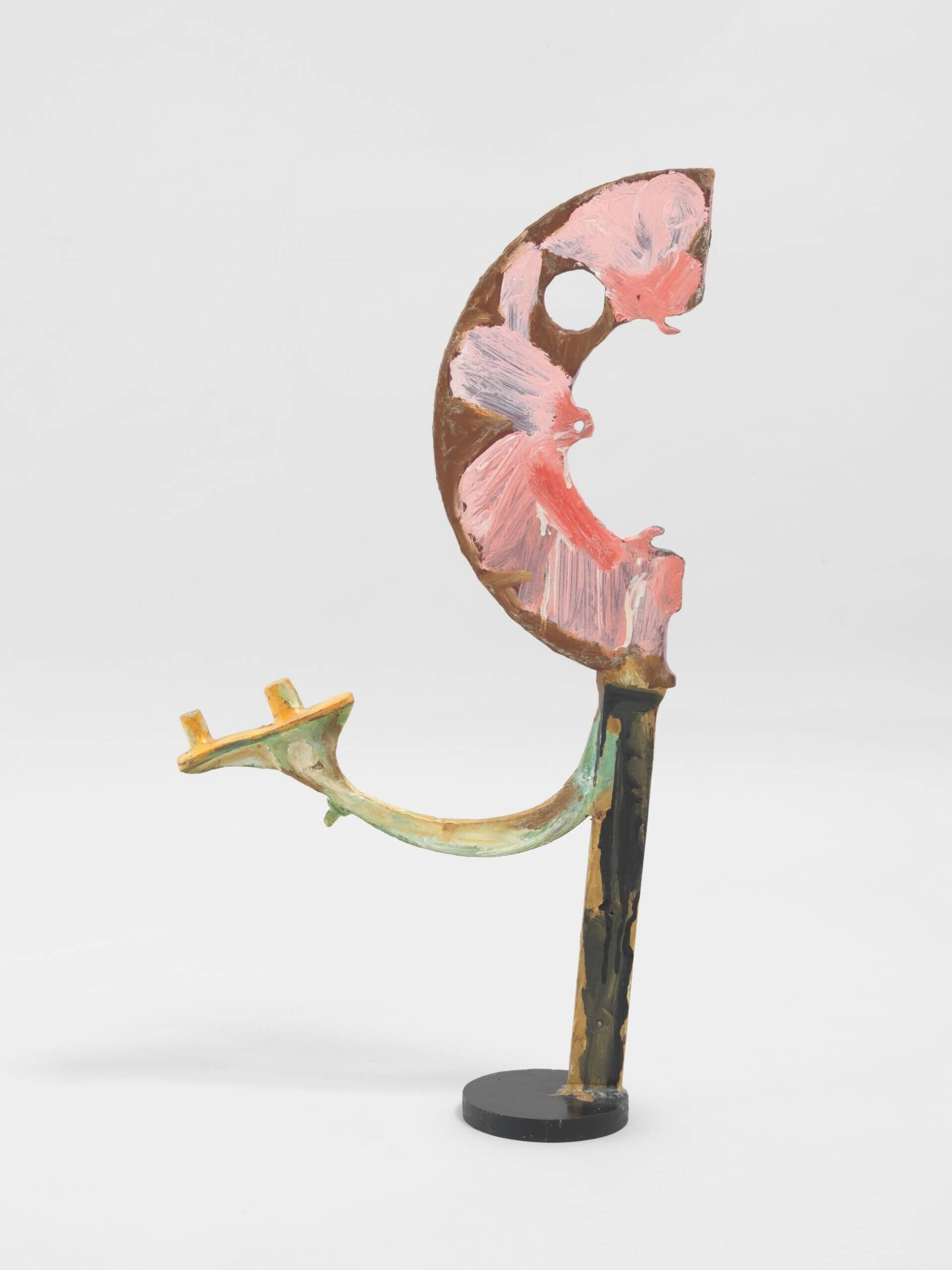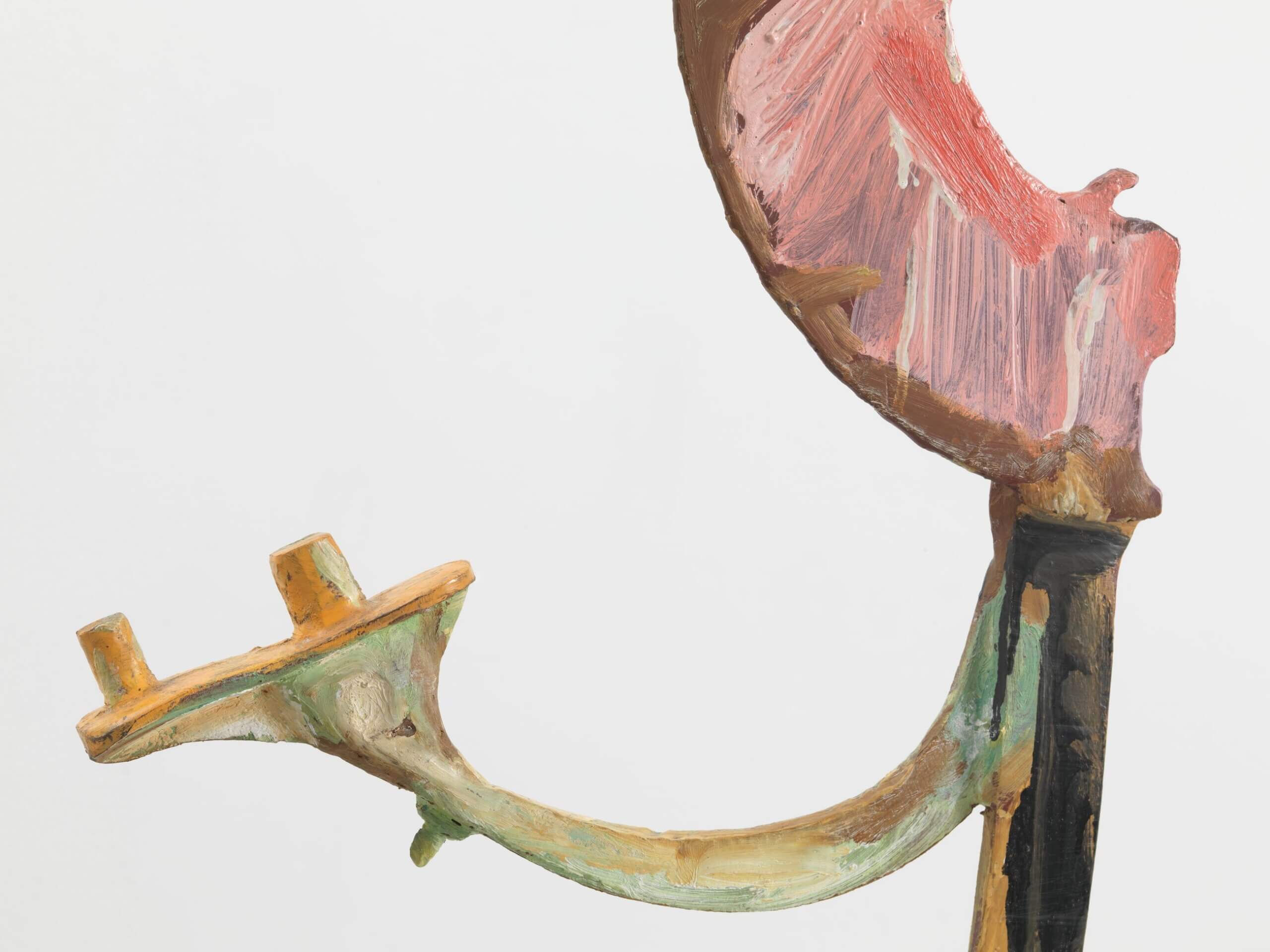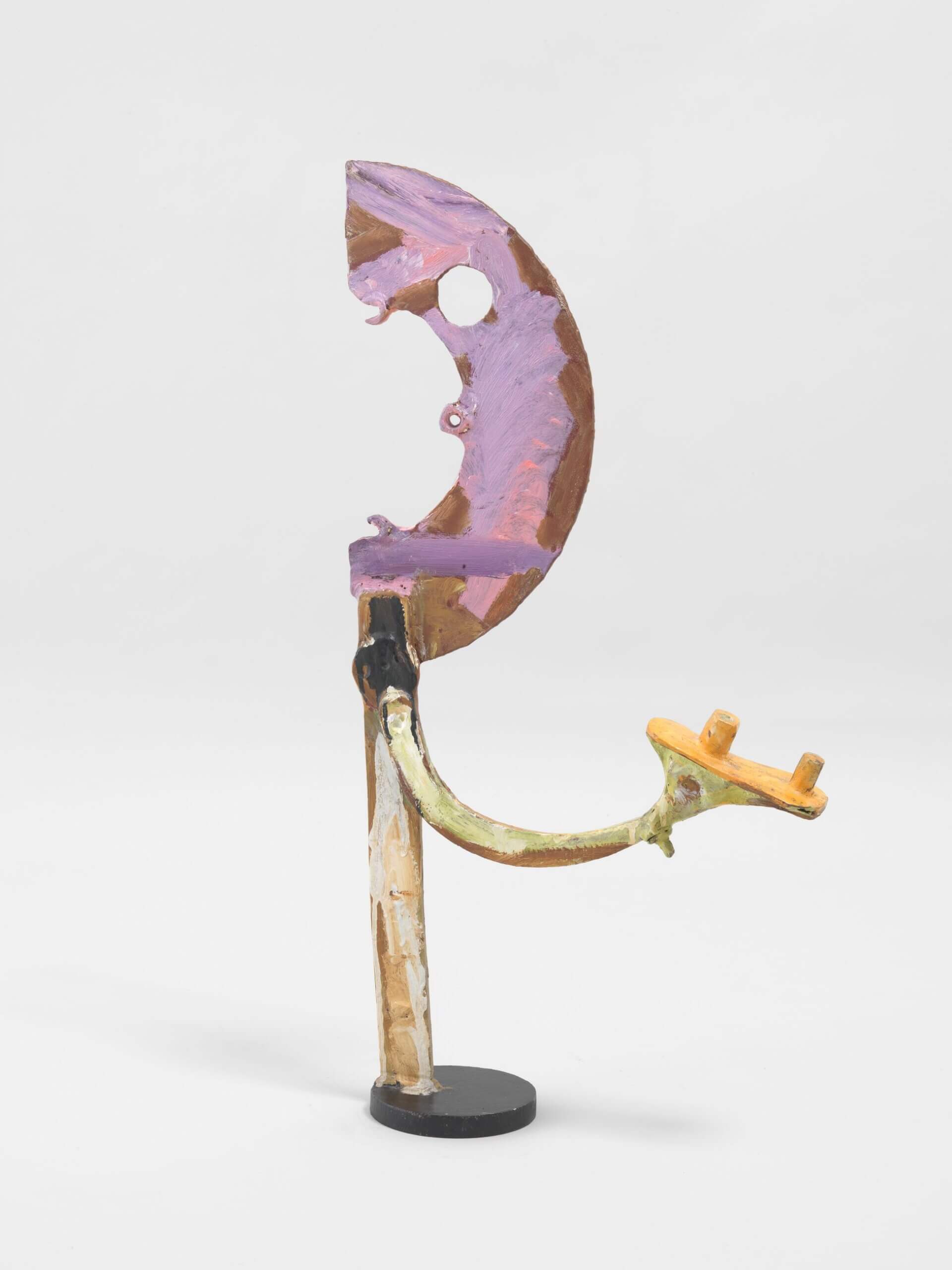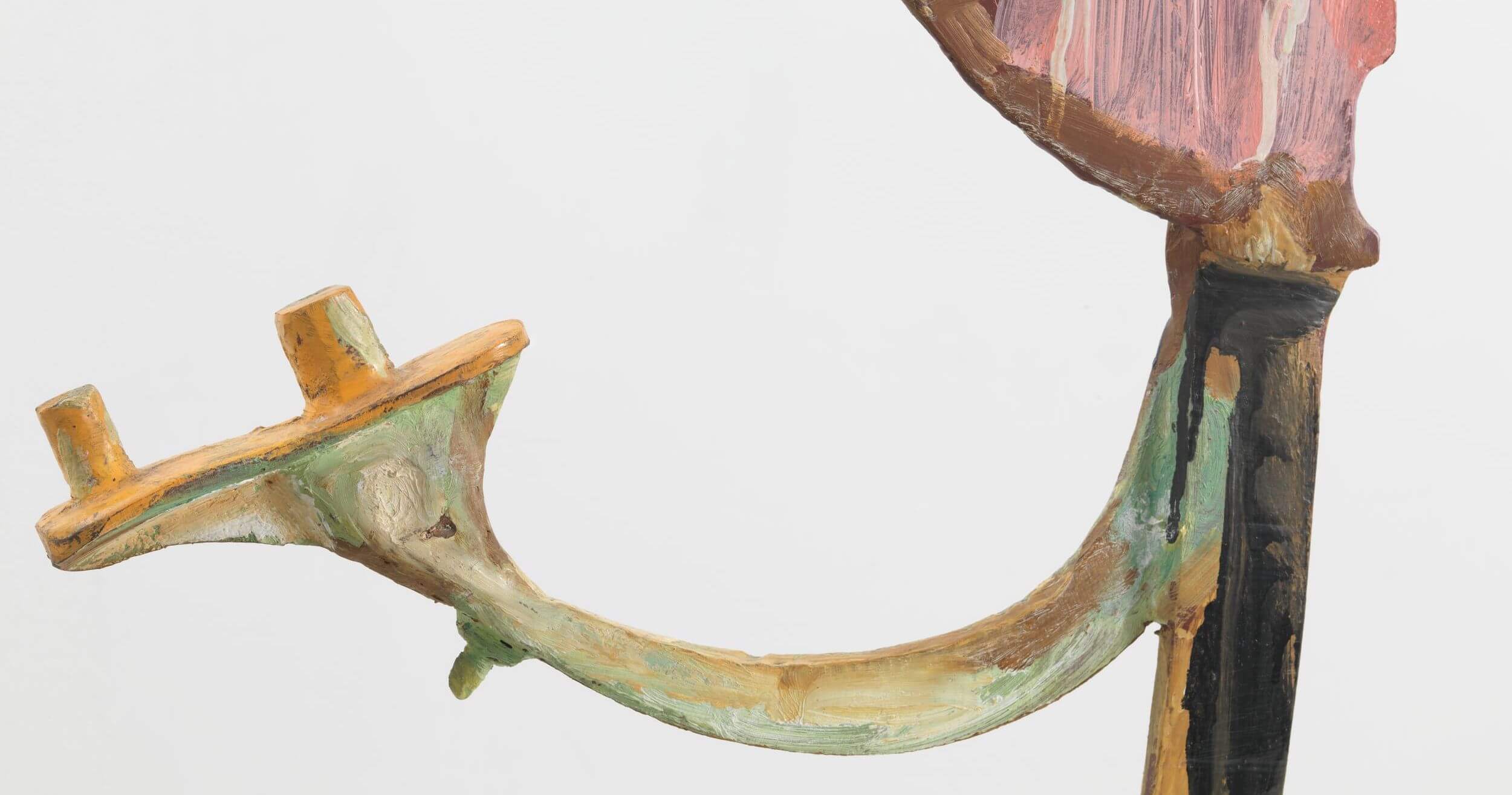
David Smith
Untitled
Untitled
1958–1959 Steel and unidentified metal, painted 77.9 x 42.9 x 13.7 cm / 30 5/8 x 16 7/8 x 5 3/8 in
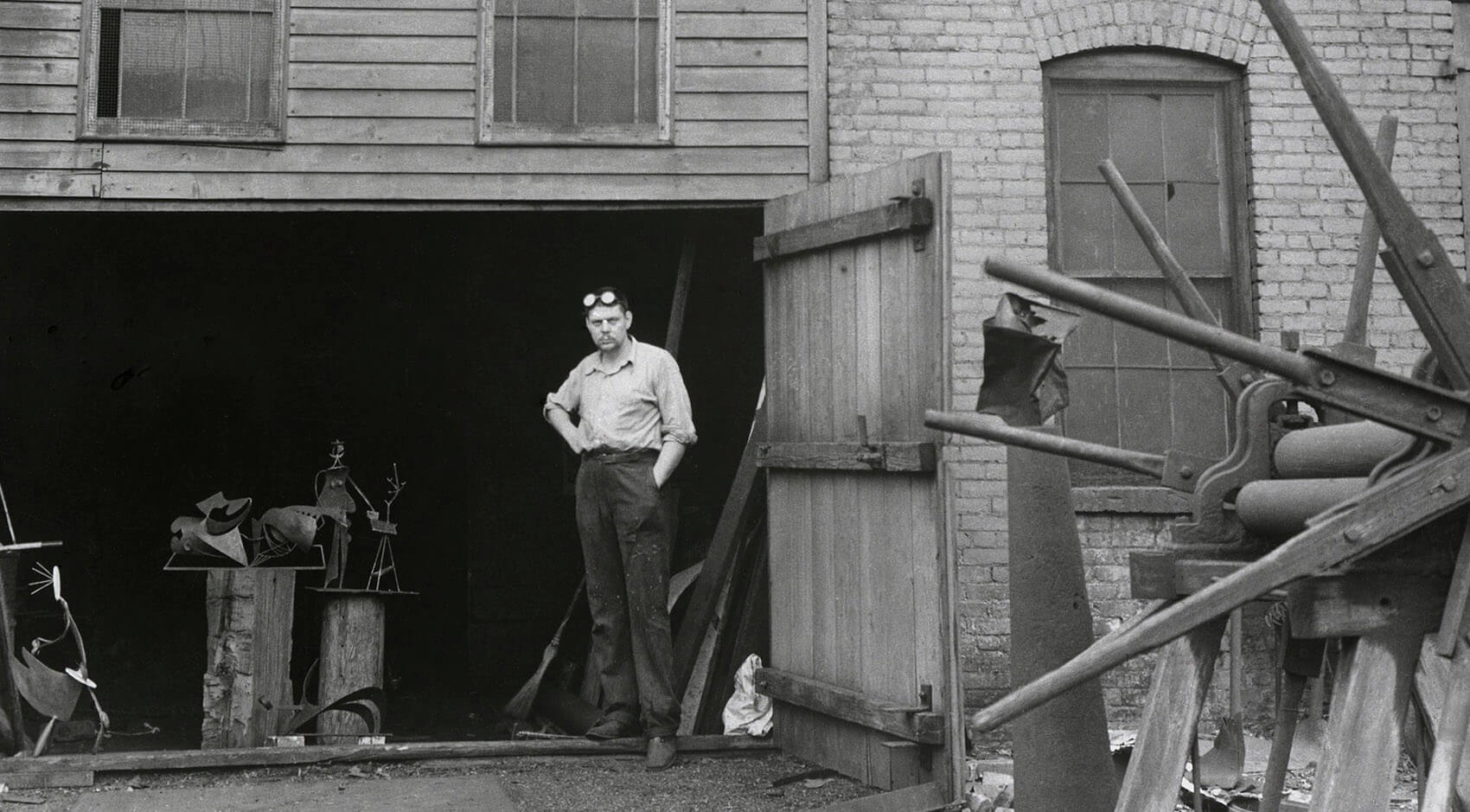
David Smith
One of the foremost artists of the twentieth century and the sculptor most closely linked to the Abstract Expressionist movement, David Smith is known for his use of industrial methods and materials, and the integration of open space into sculpture. Over a 33-year career, Smith greatly expanded the notion of what sculpture could be, questioning its relationship with the space it was created in and its final habitat; from the artist’s atelier and art foundry into the realms of industry and nature.
Untitled
'Untitled' (1958-1959) is a powerfully charged work that exemplifies the complexity of David Smith's sculpture of the 1950s. Refusing to narrow the content, imagery, or style of his work, the 1950s saw Smith expand his aesthetic interests in multiple directions. Simultaneously whimsical and austere, organic and geometric, 'Untitled' makes reference to a vast repository of sources, which include tribal art, classical antiquity and the Surrealist object. Employing industrial materials and modern technologies such as welding, Smith's sculpture challenged the limits of traditional sculpture, opening a dialogue between sculptural mass and open space, figuration and abstraction. At a time that saw Smith preoccupied with such diverse series as the 'Tanktotems' (1952-1960) and 'Albanys' (1959-1962), 'Untitled' stands apart as an independent statement, an expressional need that was not being met by Smith's other sculptural bodies of work.
By the 1950s, it was essential to Smith that his involvement with each unique, individual work was a direct and deeply personal creative act. He believed that the sheer act of producing a work of art was central to its meaning. Like many of the Abstract Expressionist painters who were his friends and contemporaries, he believed that it was the integrity of that act that assured that the artist’s deepest identity would be manifest as the subject of the work. During the 1950s, Smith became a vocal opponent to the accepted tradition of sculptural editions, arguing that sculpture should not be reduced to a craft and handed over to technicians, but should be made by the artist with the same authenticity as a painting or drawing. It is, therefore, of interest that Smith continued to use bronze as his material of choice to make closely related works that explored the same forms in close variation.
From 1958 to 1959, Smith created 'Untitled,' a welded steel and cast-iron sculpture that initiated one such exploration. The work was constructed by Smith from found and modified elements. He eventually painted this piece with a highly gestural polychrome. With its fleshy pink surface and circular cutout, it appears animated as a quintessential, modernist 'head'. Prior to the completion of that work, however, Smith used the upper portion of the sculpture as a 'pattern' from which he sand-cast two bronzes, allowing himself to transform the original steel work into two warmly patinated bronzes that, although resolutely modern, resonate with sculpture from ancient Egypt and Classical Greece to that of the Renaissance and the Baroque. The fact that Smith made the two 'versions' of this work in addition to the painted steel sculpture attests to the resonance the forms had for him.
Although the two bronze sculptures are very similar, they are (importantly to Smith) distinctive, unique works. In 'Untitled' (1959), the curving, bronze form that was added to the end of the arced, protruding element aligns with it. With its flexing biomorphism, it gives the sense of motion immediately recognizable as a foot playfully kicking up. All of the motion of this work exists in a frontal plane. Alternatively, the painted 'Untitled' is truncated – as though mid-step. Indeed, the lifted 'leg' occurs with some frequency in his work. The art historian E.A. Carmean Jr. has compared Smith’s 'Agricola I' (1951-1952), to which 'Untitled' bears distinct similarities, with the mannerist bronze, 'Mercury' (c. 1780/c. 1850), in which the figure's leg is poised in the air for flight. Scale is carefully modulated in these works. It is neither intimate nor monumental. It is what may be termed accessibly human. These works occupy the poetic shared ground between abstraction and figuration, and communicate the richness of poetic possibilities that Smith found there.
Made from industrial fragments welded together, 'Untitled' has a strong, physical connection to the seminal 'Agricola' series (1951-1959). Although never a direct proponent of Cubism and Surrealism, Smith's dynamic and expressive 'Agricolas' were heavily influenced by the earlier movements. Made from disused agricultural machinery, the series, in Elizabeth Broun's words, 'anchors the story of sculpture in America and shows how Smith changed the arc of visual expression in three-dimensions in the 20th century'. [1] In 1959, Smith made the last of the 'Agricolas'; 'Untitled' marks their swan song, yet their influence would remain central to Smith's practice. It was also in 1959 that Smith began what would be a sustained interrogation of the crescent form that crests 'Untitled' and its related works. Fascinated by the circle throughout his career, in 'Untitled' the artist dissects the shape, fundamentally modifying its meaning in his oeuvre. Later, in 1961, his first white-painted work, 'Lunar Arc' refined the proportions of 'Untitled' in favor of a streamlined aesthetic that abandoned the nuts, bolts and manifest industry of the 'Agricolas'.
As with many of Smith's best works, notably the 'Albany' series, 'Untitled' appears purely abstract. The 'Albanys' – so called for the place where Smith purchased the steel for the sculptures – are strictly non-representational, yet some of them possess powerful anthropomorphic overtones. Similarly, 'Untitled' exhibits a wealth of near-illusionistic features: an eye, a gaping mouth, a hinged tail frozen in motion and welded tightly in place. Smith's lifelong preoccupation with the figure spills over into much of his seemingly abstract practice, in sculpture that evokes bird, animal, and human form. As such, his sculptures affirm his devotion to the natural world. While Smith's most celebrated works tread the border between abstraction and figuration, between 1955 and 1960 he was also engaged in a series of decisively figurative sculptures: the 'Ravens'. Yet, just as the 'Albanys' display illusionistic traits, the 'Ravens', made up of small-scale elements, dissolve into abstraction when viewed up close. 'Untitled' is placed, both chronologically and conceptually, somewhere between both bodies of work, neither purely abstract nor representational, bridging the divide between the two.
[1] Elizabeth Broun, quoted in Graham Bowley, ‘Smithsonian Announced Gift of David Smith Sculpture’, New York NY: The New York Times, December 17, 2015, accessed online February 10, 2016 [http://nyti.ms/1maWSR3\].
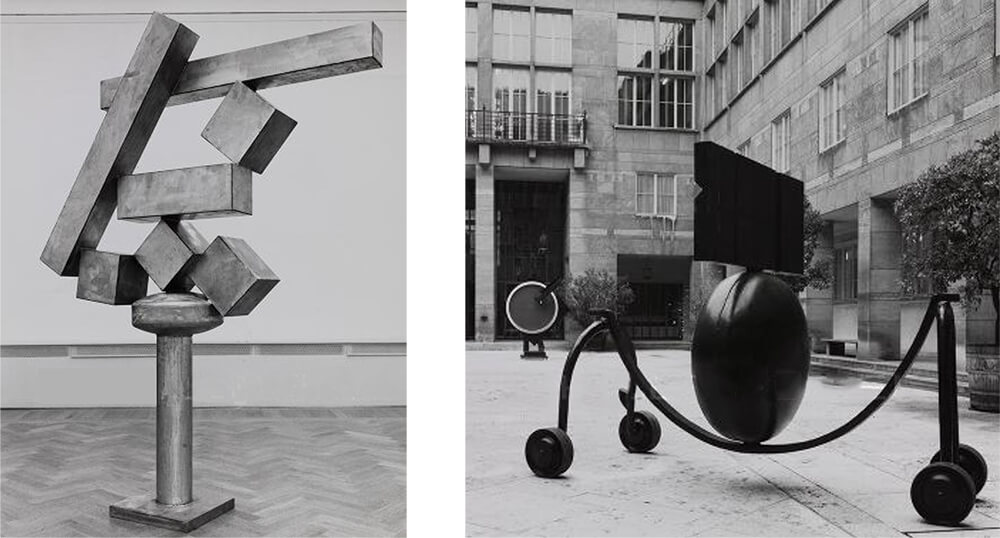
Celebrating Basel Basel
A major retrospective of titled ‘David Smith 1906 – 1965’ travelled to Kunsthalle Basel in 1966—just one year after the artist’s death—making the posthumous survey integral to establishing the artist as a master of contemporary sculpture in Europe, where it was presented at Tate Gallery in London and the Rijksmuseum, among many other venues.
‘Wagon I’ is pictured outside in the courtyard, and the exhibition included other major works such as ‘The Banquet’ and ‘Sentinel III’.


